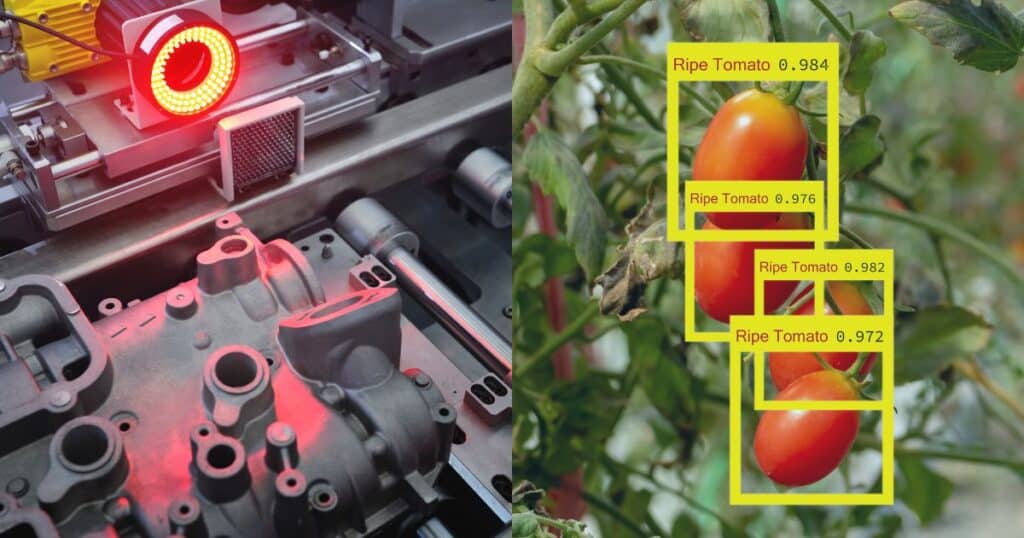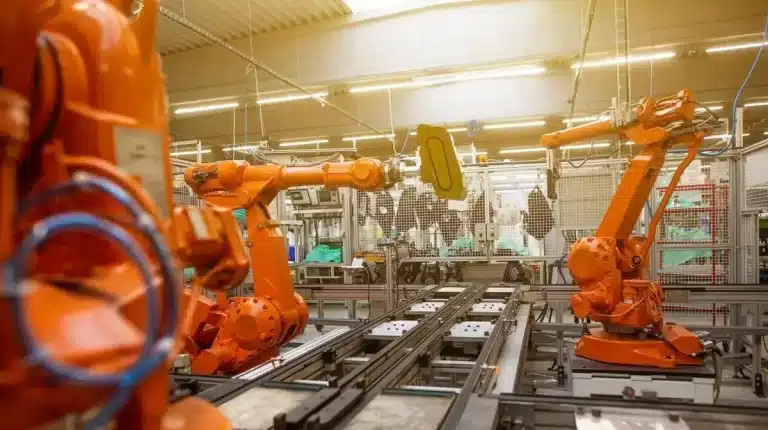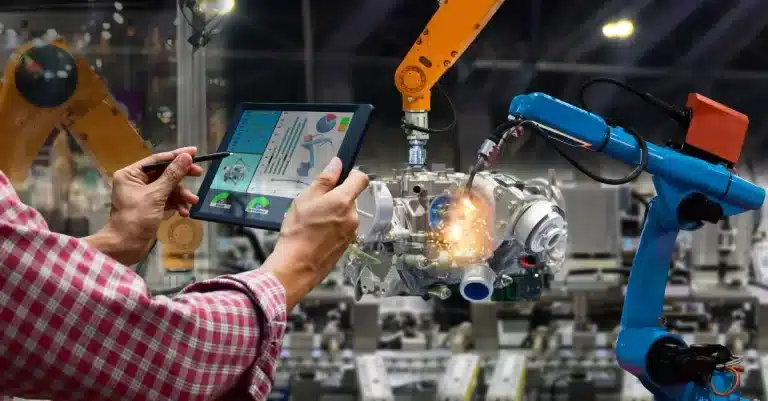In the world of cutting-edge technology, understanding the difference between machine vision and computer vision is crucial for experts and innovators alike.
Although they might seem similar at first glance, these two technologies have unique features and are used in a variety of ways across different sectors.
Machine vision specializes in being integrated into operations and is designed for specific tasks. On the other hand, computer vision focuses on making systems capable of understanding and analyzing images on their own.
Delving into these technologies helps us not only recognize their distinct characteristics but also consider their potential impact on future technological developments. Discussing their differences sheds light on their roles and how they could influence the direction of technology in the years to come.

Key Takeaways
- Machine vision uses images to make decisions in technology, often using cameras and specialized software.
- Computer vision interprets and analyzes images, which doesn’t always need to be captured in real-time, to gather information.
- In industries like automotive, food, and solar, machine vision is crucial for ensuring quality through detailed inspections.
- Computer vision is used in various areas, including recognizing objects, sorting, identifying faces, and adding digital elements to the real world, showcasing its broad application in understanding images.
Key Differences
Understanding the difference between machine vision and computer vision is key to effectively using them in technology.
Machine vision combines hardware and software to help machines work, mostly used for checking quality and automating stuff in factories. It uses special imaging to do specific jobs, using cameras and smart algorithms.
Machine vision uses image processing with specific rules to give technologies the ability to see. It uses a system that includes a camera, lens, processor, and software to make decisions based on images.
On the other hand, computer vision is part of artificial intelligence, aiming to copy how humans see. This tech isn’t just for factories; it’s used in many areas to get info from pictures or videos to analyze, understand, and make choices on its own, without humans needing to help. While they might seem similar, they serve different purposes in the world of vision-based tech.
Computer vision doesn’t need hardware for capturing images. It focuses on capturing, automating, and interpreting image analysis. It works with both real and synthetic images to extract and use data efficiently. This main difference shows the distinct ways they operate and their unique roles in vision technology.
Practical Applications
Exploring how machine vision and computer vision are applied in different fields shows their unique roles in tackling specific tasks. Here’s how they’re used in various industries:
- Healthcare: Computer vision helps with analyzing medical images to spot any unusual patterns or issues. This support in diagnostics and patient care leads to better treatment plans. Read the case study.
- Retail: Machine vision streamlines how inventory is managed and how checkouts are handled. It automates billing and keeps track of stock, making things more efficient.
- Security: With computer vision, surveillance systems get smarter. They can recognize faces and pick up on odd behaviors, making public places and properties safer.
- Agriculture: Machine vision is a game-changer for farming. It helps keep an eye on crops and spots diseases early, making farming more precise and less wasteful.
- Fabric Inspection: Machine vision systems can identify defects like wrinkles, tears, misalignment of seams, or incorrect material used for the seat cover. High-resolution cameras capture detailed images, and deep learning algorithms analyze them to detect even subtle flaws. See the case study.
These examples highlight how vision technology is revolutionizing different sectors by making operations more innovative and efficient.
Industrial Uses
Exploring the transformative effects of machine and computer vision technologies shows their essential role in boosting productivity and accuracy across different industrial areas.
Beyond manufacturing, these technologies are used in logistics to improve warehouse operations, in agriculture for crop monitoring and predictive analysis, and in the energy sector for maintaining infrastructure.
The accuracy of machine vision systems helps in the detailed inspection and identification of defects instantly, enhancing quality control processes without needing human input.
Similarly, computer vision’s ability to understand complex visual data allows for automatic monitoring and decision-making in various settings, from underwater exploration to space missions. This provides unique insights and improves operational efficiency. These advancements ensure industries stay competitive, flexible, and ready to tackle new challenges with creative solutions.
Machine Vision in Manufacturing
Leveraging the revolutionary impact of vision technologies in various sectors, machine vision significantly enhances manufacturing operations through automated quality checks and detailed inspections.
By incorporating machine vision software, manufacturers gain several key advantages, making these technologies a vital addition to their processes. Here are four main benefits:
- Better Quality Control: Machine vision systems deliver unmatched precision in detecting flaws, ensuring only products that adhere to high-quality standards are sold.
- Boosted Production Efficiency: Automating inspections allows manufacturers to significantly cut down on manual labor, accelerating production lines while still producing top-notch items.
- Lowered Operating Costs: The accuracy of machine vision systems helps in identifying mistakes early in the production stage, leading to considerable savings in costs.
- Enhanced Safety: Using machine vision for inspections decreases the need for human involvement in areas that could be dangerous, making the workplace safer.
Frequently Asked Questions
Conclusion
To wrap it up, it’s key to grasp the difference between machine vision and computer vision, as it’s crucial for understanding how they function and are used in various industries.
Machine vision, which relies on specific rules for particular tasks, boosts efficiency in manufacturing and quality checks.
Computer vision focuses on analyzing images automatically, is pushing forward innovations in identifying objects and recognizing faces.
Acknowledging these distinctions is essential for making the most of each technology’s strengths, leading to innovation and enhanced quality in a range of fields.
Unlock Your Business Potential With AI!
Book a consultation with our expert and discover tailored solutions to boost your business success. Don’t miss out on this opportunity to gain personalized insights and strategies.

Gediminas Mickus
Business Development Manager
Limited seats available - Act now!

